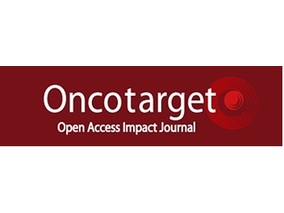
“The Cannabis plant contains over 100 phytocannabinoids and hundreds of other components. The biological effects and interplay of these Cannabis compounds are not fully understood and yet influence the plant’s therapeutic effects.
Here we assessed the antitumor effects of whole Cannabis extracts, which contained significant amounts of differing phytocannabinoids, on different cancer lines from various tumor origins.
Our results show that specific Cannabis extracts impaired the survival and proliferation of cancer cell lines as well as induced apoptosis.
Our findings showed that pure (-)-Δ9–trans-tetrahydrocannabinol (Δ9-THC) did not produce the same effects on these cell lines as the whole Cannabis extracts. Furthermore, Cannabis extracts with similar amounts of Δ9-THC produced significantly different effects on the survival of specific cancer cells.
In addition, we demonstrated that specific Cannabis extracts may selectively and differentially affect cancer cells and differing cancer cell lines from the same organ origin. We also found that cannabimimetic receptors were differentially expressed among various cancer cell lines and suggest that this receptor diversity may contribute to the heterogeneous effects produced by the differing Cannabis extracts on each cell line.
Our overall findings indicate that the effect of a Cannabis extract on a specific cancer cell line relies on the extract’s composition as well as on certain characteristics of the targeted cells.”
http://www.oncotarget.com/index.php?journal=oncotarget&page=article&op=view&path[]=26983
“Many previous reports highlight and demonstrate the anti-tumor effects of cannabinoids. In the last decade, accumulating evidence has indicated that phytocannabinoids might have antitumor properties. A number of in vitro and in vivo studies have demonstrated the effects of phytocannabinoids on tumor progression by interrupting several characteristic features of cancer. These studies suggest that specific cannabinoids such as Δ9-THC and CBD induce apoptosis and inhibit proliferation in various cancer cell lines.”


 “Accumulating evidence supports the role of the cannabinoid system in providing an antinociceptive effect in various painful conditions.
“Accumulating evidence supports the role of the cannabinoid system in providing an antinociceptive effect in various painful conditions. “The cannabinoid receptor CB1 is involved in modulation of neuronal hypersensitivity and pain. The aim of this study was to evaluate CB1 receptor levels for the first time in dental pain. A total of 19 patients due for molar extraction were divided into two groups, those with existing dental pain (n=9), and those with no history of pain (n=10). Immunohistochemistry and computer image analysis was used to evaluate CB1-positive nerve fibres in tooth pulp, with neurofilament-immunostaining as a structural nerve marker. CB1-immunoreactive nerve fibres were scattered throughout the tooth pulp and often seen in nerve bundles, but the fibres did not penetrate the subodontoblastic layer. There was no statistically significant change in the CB1 nerve fibre percentage area in the painful group compared to the non-painful group (p=0.146); the neurofilament fibres were significantly reduced in the painful group compared to the controls (p=0.028), but there was no difference in the ratio of CB1 to neurofilaments between the two groups. Thus, CB1 expression is maintained by nerve fibres in painful human dental pulp, and peripherally-restricted CB1 agonists currently in development may advance the treatment of dental pain.”
“The cannabinoid receptor CB1 is involved in modulation of neuronal hypersensitivity and pain. The aim of this study was to evaluate CB1 receptor levels for the first time in dental pain. A total of 19 patients due for molar extraction were divided into two groups, those with existing dental pain (n=9), and those with no history of pain (n=10). Immunohistochemistry and computer image analysis was used to evaluate CB1-positive nerve fibres in tooth pulp, with neurofilament-immunostaining as a structural nerve marker. CB1-immunoreactive nerve fibres were scattered throughout the tooth pulp and often seen in nerve bundles, but the fibres did not penetrate the subodontoblastic layer. There was no statistically significant change in the CB1 nerve fibre percentage area in the painful group compared to the non-painful group (p=0.146); the neurofilament fibres were significantly reduced in the painful group compared to the controls (p=0.028), but there was no difference in the ratio of CB1 to neurofilaments between the two groups. Thus, CB1 expression is maintained by nerve fibres in painful human dental pulp, and peripherally-restricted CB1 agonists currently in development may advance the treatment of dental pain.”
 “The present findings reveal an imbalance in the expression and function of different elements of the endocannabinoid system in schizophrenia.
“The present findings reveal an imbalance in the expression and function of different elements of the endocannabinoid system in schizophrenia.
 “Volatile terpenes represent the largest group of
“Volatile terpenes represent the largest group of 


 “The anti-depressant effect of repetitive transcranial magnetic stimulation (rTMS), a clinically-useful treatment for depression, is associated with changes to the endocannabinoid system (ECS).
“The anti-depressant effect of repetitive transcranial magnetic stimulation (rTMS), a clinically-useful treatment for depression, is associated with changes to the endocannabinoid system (ECS).